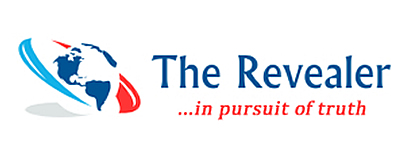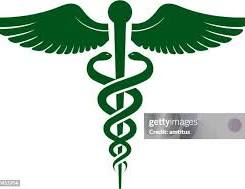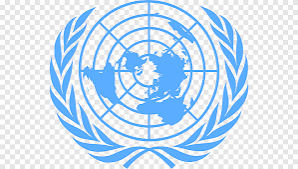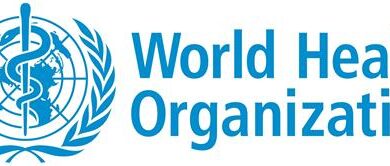WHO-SAGE Releases Recommendations On Strategies And Use Of Vaccines

The World Health Organisation (WHO) Strategic Advisory Group of Experts on Immunization (SAGE) has released recommendations on strategies and the use of a range of vaccines to prevent infectious diseases including RSV, cholera, polio and universal rubella vaccine.
This was the fallout of their regular biannual meeting held from 23 to 26 September, 2024.
According to WHO, SAGE recommendations was announced and discussed at the press conference yesterday 01 October, 2024.
The full report will be published in the Weekly Epidemiological Record on 6 December 2024; the wording of the full report is considered final.
Key highlights:
- Respiratory syncytial virus (RSV) vaccine: SAGE recommends the introduction of passive immunization (maternal vaccination and monoclonal antibody administration in infants) for the prevention of severe RSV disease in young infants in all countries. For countries that decide to use the maternal vaccine to prevent severe RSV disease in infants, SAGE recommends a single dose of vaccine in the third trimester of pregnancy.
- Universal rubella vaccine: SAGE discussed the current WHO recommendation requiring 80% coverage threshold with measles-containing vaccines as a requirement for the introduction of rubella containing vaccine (RCV), and recommended that this threshold be lifted.
- Poliomyelitis: SAGE expressed support for the planning for the eventual global cessation of bivalent oral poliovirus vaccines (bOPV) use and endorsed the evolving policy framework, triggers and principles of risk tiering of countries for bOPV cessation, noting that further work on the plan is ongoing.
- Mpox: SAGE received an update on the current status of the ongoing mpox public health emergency of international concern (PHEIC) and the progress in implementing their recommendations from the WHO mpox vaccine position paper published in August 2024.
- Immunization coverage: Global coverage of the human papillomavirus (HPV) has increased substantially in 2023 and malaria vaccines are now in use in 13 African countries, with additional countries to introduce in 2024 and 2025.
- Immunization Agenda 2030: While trends in vaccination coverage and zero-dose children have remained flat or seen a reversal in several WHO regions, there are exemplary countries that are sustaining high coverage. High political will and strong accountability processes at the subnational levels appear to be common attributes in such countries.
Highlights
Session 1: Global reports
Report from the Department of Immunization, Vaccines, and Biologicals
- In 2023, despite signs of recovery, global immunization coverage still remained below pre-pandemic levels and the number of “zero-dose” children has increased from 2022 reaching 14.5Mn.
- 55 percent of zero-dose children live in 31 countries, and many in fragile, conflict-affected and vulnerable settings (FCV).
- Trends have been uneven across regions and between countries; at the regional level, a decline in zero-dose children was only observed in the African Region and the Region of the Americas.
- Large and disruptive measles outbreaks were reported in 57 countries in 2023-24 notwithstanding efforts to fill immunity gaps through campaigns, highlighting the importance of strengthening routine immunization delivery.
- Despite the setbacks, there are encouraging examples of success in some countries. Global coverage of the human papillomavirus (HPV) has increased substantially in 2023 and malaria vaccines is now in use in 13 African countries, with additional countries to introduce in 2024 and 2025.
- In shaping the future of immunization programmes, the ongoing tension between strengthening the routine delivery of routine immunization through systems strengthening and a primary healthcare (PHC) approach and the imperative to act quickly to address the risk of disease outbreaks in FCV settings that require vertical campaign approaches needs to be comprehensively addressed.
Update from Gavi, the Vaccine Alliance
- Gavi funding is supporting countries with catch-up vaccination to get back on track to achieve the target of reducing the number of zero-dose children.
- Though HPV vaccination programmes are being revitalised and coverage improving with the adoption of the WHO recommended 1-dose schedule, the 2025 coverage target of 87 million girls reached may not be achieved because of supply shortages.
- The Gavi 6.0 strategy was approved by the Board in June 2024 and aims to protect 500 million children and avert over 8 million deaths in the 2026-2030 period.
- In partnership with Alliance Partners, Gavi is supporting pandemic and outbreak response to access mpox vaccines to respond to the mpox public health emergency of international concern.
- In 2024, GAVI provides vaccines against 20 infectious diseases. The GAVI Vaccine Investment Strategy 6.0 includes investments in principle for vaccines against tuberculosis, group B streptococcus, hepatitis E and mpox. Support for the introduction of the dengue vaccine is conditional on country-specific burden data. Learning agendas were approved for these five vaccines, as well as for shigella vaccines.
Session 2: Immunization Agenda 2030 (IA2030)
Regional progress against IA2030 targets
- At the WHO Regional level, countries are not on track with achieving the regional immunization targets.
- While two Regions have experienced an increase in vaccination coverage and a decrease in zero-dose children, the trends in vaccination coverage and zero-dose children have remained flat or seen a reversal in the remaining Regions.
- Inadequate political will, declining investments in immunization programmes, health system weaknesses and challenges in reaching those in fragile, conflict-affected and vulnerable (FCV) settings are common challenges faced in countries across all regions.
- Despite the challenges, there are exemplary countries that are sustaining high coverage. High political will and strong accountability processes at the subnational levels appear to be common attributes in such countries.
Global Progress against IA2030 impact goals and strategic priority indicators
- Progress against the IA2030 targets is not on track to achieve IA2030 impact goals by 2030. A focus on routine immunization programme strengthening, as part of Primary Health Care and adequate domestic government financial and human resources are key to getting back on track in a sustainable manner.
- Progress can only be achieved with accountability at all levels, which includes local and national levels, and the use of actionable metrics for assessment of progress. This requires establishing an enabling environment and way of working.
- The metrics to measure progress should be more elaborate than the absolute number of zero-dose children. Composite indicators that provide a more comprehensive understanding of causalities are needed.
- Strategies for political engagement at global, regional and national levels should be explored to secure adequate and sustained investments in immunization aligned with country health plans.
- There is concern about the rise in FCV settings, and a recognition of the need for flexible, adaptable and differentiated approaches suited to the local context with a greater risk appetite to ensure timely access to vaccines and other supplies.
Session 3: Respiratory Syncytial Virus (RSV)
- RSV infection causes a substantial burden of severe lower respiratory tract infection (LRTI) in all countries, accounting for approximately 30% of hospitalized LRTIs. However, close to 97% of related mortality is estimated to occur in low- and middle-income countries, with an estimated 101 400 annual deaths in children under 5 years of age. RSV is also a major cause of morbidity and mortality in older adults.
- For children, there are presently two approaches to prevention (both are passive immunization approaches): maternal vaccination and monoclonal antibody administration to infants.
- An RSV pre-fusion protein vaccine administered to pregnant women at 24 to 36 weeks gestation was shown to be efficacious (vaccine efficacy: 70% (95% Confidence Interval (CI): 51-83%)) in preventing severe RSV-associated lower respiratory illness in the first 180 days of life.
- There were no serious adverse events in the vaccinated women. An excess in pre-term births was observed in the vaccine group. This overall non-statistically significant imbalance was observed in trial sites located in two upper-middle-income countries (UMICs) but not in other settings.
- Modelling studies indicate that the benefits of vaccination will outweigh the potential risk posed by excess pre-term births as observed in the clinical trial.
- To mitigate the potential risk of pre-term births, SAGE considered narrowing the gestational age for maternal RSV vaccination.
- SAGE recognized the critical importance of a post-licensure, multi-centre, randomized controlled study of the safety and effectiveness of the vaccine planned in several African countries for clarifying the safety signal related to preterm births. SAGE recommended including a country from South Asia to increase the representatives of the study.
- A long-acting monoclonal antibody targeting the RSV pre-fusion protein when administered to infants starting from birth just before or during the RSV season was shown to be highly efficacious (vaccine efficacy: 79% (95%CI: 69-86%)) in preventing RSV-associated lower respiratory illness in the first 6 months of life. There were no safety signals of concern.
- Given the global burden of RSV disease, SAGE recommended that all countries introduce passive immunization for the prevention of severe RSV disease in young infants.
- For countries deciding to use the maternal vaccine to prevent severe RSV disease in infants, SAGE recommends a single dose of vaccine in the third trimester of pregnancy, as defined in the local context (third trimester starts at 28 weeks gestational age in most settings).
- Decisions to include maternal vaccination and/or the long-acting monoclonal antibody in an immunization programme should consider cost, financing, supply, anticipated coverage and feasibility of implementation within the existing health system.
- SAGE reinforced the importance of manufacturer-led post-marketing surveillance.
- SAGE also noted with concern the limited availability and high cost of the monoclonal antibody which will seriously limit global access and equity.
Session 4: Cholera
- SAGE noted with concern the ongoing outbreaks and current oral cholera vaccine (OCV) supply constraints and called on the global health community to continue working together to find timely solutions.
- Notwithstanding the persistent supply shortfalls, SAGE commended the significant investments and efforts by a broad range of stakeholders, manufacturers and funders which will lead to a significant increase in supply and broader supply base with new producers on the horizon.
- SAGE highlighted the importance of preventive immunization programmes as part of a multisectoral response, which should lead to a more predictable vaccine demand, stabilise vaccine supply and enable a timely response to emerging outbreaks.
- SAGE requested periodic updates on cholera control and OCV supply to enable timely and tailored strategic and policy guidance when required.
- SAGE further requested to be informed of the current efforts on harnessing research and evidence for cholera control to ensure that ongoing and planned research provides the evidence to inform future policy and strategic recommendations.
Session 5: Poliomyelitis
- SAGE expressed concern about the increase in cases and environmental detections of wild poliovirus type 1 (WPV1) in Afghanistan and Pakistan, and the continued transmission of circulating vaccine-derived polioviruses (cVDPV) in Africa and new detections of cVDPV type 2 in Gaza. This highlights the need for further and enhanced efforts to improve routine immunization coverage and outreach services to populations in FCV settings.
- SAGE expressed support for the planning for the eventual global cessation of bivalent oral poliovirus vaccines (bOPV) use and endorsed the evolving policy framework, triggers and principles of risk tiering of countries for bOPV cessation, noting that further work on the plan is ongoing.
- SAGE reiterated that timely OPV remains the primary tool for outbreak response because of its ability to elicit mucosal immunity. However, it was noted that the immunogenicity of OPV in settings where WPV1 or cVDPV outbreaks occur is often suboptimal and recommended that inactivated poliovirus vaccines (IPV) be administered concomitantly with the novel OPV type 2 (nOPV2) or bOPV during outbreak response vaccination campaigns, unless it would impact the timeliness of the response.
- In areas with co-circulation of poliovirus types 1 and 2, SAGE recommended concomitant administration of nOPV2 and bOPV, together with IPV.
- SAGE reiterated the importance of environmental surveillance for polioviruses and encouraged the Global Polio Eradication Initiative to strengthen and expand this type of surveillance where feasible.
- SAGE requested WHO to develop a risk-grading criteria framework to determine eligible countries that could safely transition to an IPV-only schedule ahead of global coordinated bOPV cessation.
Session 6: Rubella and congenital rubella prevention
- Around 32 000 infants continue to be born annually with congenital rubella syndrome (CRS), mostly in the 19 countries that have yet to introduce rubella containing vaccine (RCV). With 6 countries planning for RCV introduction, 13 countries will remain without planned implementation of RCV unless the present requirements for introduction are changed.
- The current WHO recommendations requiring ≥80% coverage with the first dose of measles-containing vaccines (MCV; a proxy for what the coverage with rubella vaccine would be when introduced) is a barrier to introducing rubella-containing vaccines (RCV). It was established in 2000 to address concerns about potential paradoxical increase in CRS following routine introduction of rubella vaccine in settings with low childhood immunization coverage.
- SAGE was presented with new evidence based on empirical epidemiologic data and mathematical modelling to revisit the 80% threshold.
- Data showed that the ≥80% coverage threshold is overly conservative and no longer warranted.
- Mathematical models predict that the introduction of RCV will lead to a substantial reduction in CRS over 10-15 years and net reductions over 30 years.
- Routine immunization accompanied by a wide age-range campaign at introduction is predicted to be sufficient to prevent the paradoxical increase in CRS in most of the remaining countries and routine immunization plus follow-up supplementary immunization activities (SIAs) such as campaigns, at current coverage levels are sufficient to prevent a paradoxical effect in all countries.
- SAGE recommended that the 80% coverage threshold with MCV as a requirement for the introduction of RCV be lifted. The universal introduction of RCV, accompanied by wide age-range campaigns at introduction, should be initiated in the remaining 13 countries. Regular follow-up campaigns are recommended in countries where routine MCV coverage is below 90%.
- SAGE also recommended ongoing monitoring, evaluation, and targeted interventions to inform timely action in any countries or subnational areas identified to be at risk of an increase in the incidence of rubella or CRS.
Session 7: Update on mpox and influenza H5N1
- SAGE was updated on the current status of the ongoing mpox public health emergency of international concern (PHEIC) and outbreaks of influenza A H5N1 and avian influenza viruses with zoonotic potential globally.
- The epidemiology of infection and disease of these two viruses and actions being taken by WHO in response were described.
- SAGE provided recommendations on mpox vaccine use in March 2024, and WHO issued an mpox vaccine position paper in August 2024 based on those recommendations.
- A Global Strategic Preparedness and Response Plan for mpox has been developed to stop outbreaks and interrupt transmission. It complements the Continental Preparedness and Response Plan for Africa jointly developed by Africa CDC and WHO.
- The first mpox vaccine (MVA-BN) has received WHO prequalification and is currently being distributed and rollout beginning soon. Two other mpox vaccines are under WHO Emergency Use Listing (EUL) consideration.
- Continuous monitoring and response for animal influenza viruses with zoonotic potential is in place.
Session 8: COVID-19
- Omicron sub-lineages of the SARS-CoV-2 virus variants continue to circulate globally without any clear seasonality. However, there is a declining trend in reported cases, hospitalisations and deaths due to COVID-19.
- Several COVID-19 vaccines have been updated to target the currently circulating JN.1 and KP.2 subvariants. The mRNA and protein-based vaccines are in highest use, though access to and demand for these vaccines is low, especially in low- and middle-income countries.
- Vaccine effectiveness against severe disease remains high and relatively stable over several months. However, the effectiveness against symptomatic disease is lower and wanes more quickly; the effectiveness of vaccines matched to the currently circulating Omicron variants appears to be higher than mismatched vaccines.
- Noting the limited vaccine access and low demand, SAGE reaffirmed the validity of the existing WHO SAGE Roadmap for prioritising uses of COVID-19 vaccines[1] and the priority-use groups defined and emphasised the importance of revaccination of the priority-use groups as recommended in the Roadmap.
- A WHO COVID-19 vaccine position paper will be developed, and publication is expected in 2025. A list of key knowledge gaps that need to be addressed to develop the position paper has been defined.





